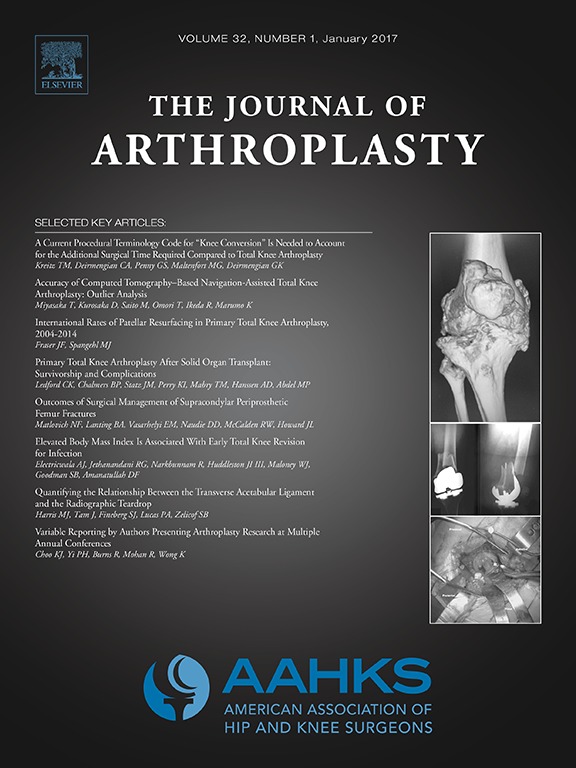
Arthroplasty
Anterolateral approach demonstrates poorer early cup fixation than posterior approach in resurfacing
J Arthroplasty. 2017 Nov;32(11):3412-342049 patients scheduled for hip resurfacing were randomized to either an anterolateral approach or posterior approach. Patients were assessed for component migration on radiostereometric analysis over 2-year follow-up, as well as periprosthetic bone mineral density, clinical results, and incidence of radiolucency and osteolysis. Total translation and rotation of the acetabular component was significantly greater at 3 months in the anterolateral approach group compared to the posterior approach group; differences at 2 years were not statistically significant. The anterolateral approach also demonstrated lower measures for femoral bone mineral density in the central medial region of interest at 1 and 2 years when compared to the posterior approach group. Differences between groups in Harris Hip Scores and visual analog scale (VAS) pain scores were not significant.
Unlock the full article
Get unlimited access to OrthoEvidence with a free trial
Start TrialCritical appraisals of the latest, high-impact randomized controlled trials and systematic reviews in orthopaedics
Access to OrthoEvidence podcast content, including collaborations with the Journal of Bone and Joint Surgery, interviews with internationally recognized surgeons, and roundtable discussions on orthopaedic news and topics
Subscription to The Pulse, a twice-weekly evidence-based newsletter designed to help you make better clinical decisions
Exclusive access to original content articles, including in-house systematic reviews, and articles on health research methods and hot orthopaedic topics
Or continue reading this full article
Register Now

Subscribe to "The Pulse"
Evidence-Based Orthopaedics direct to your inbox.




































